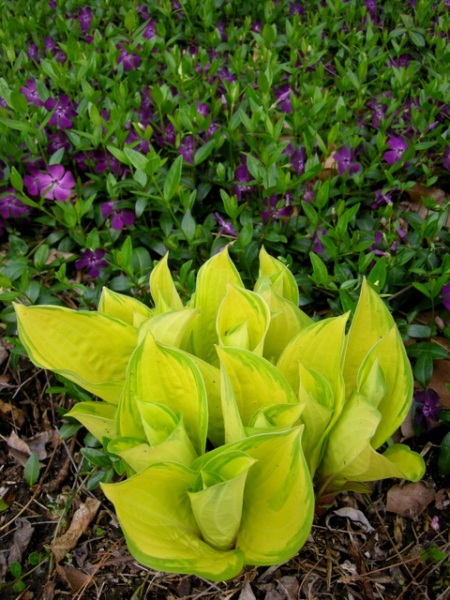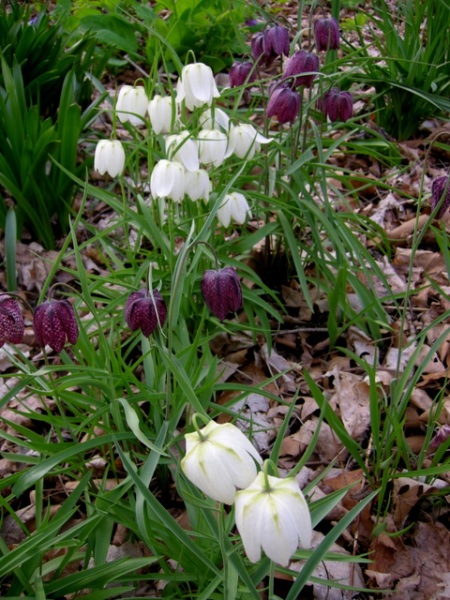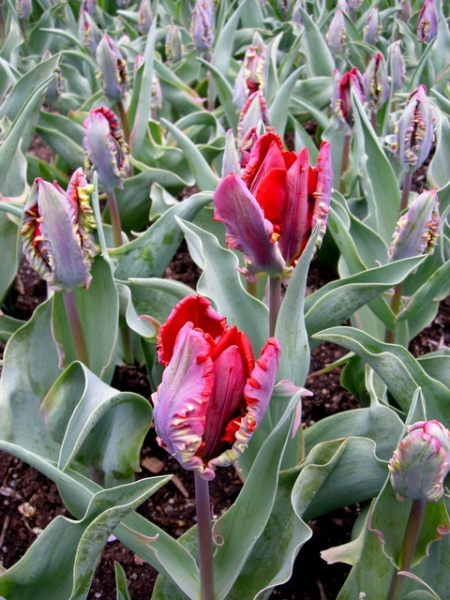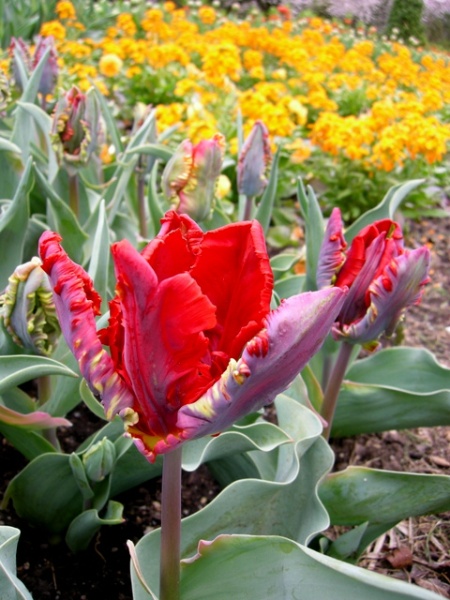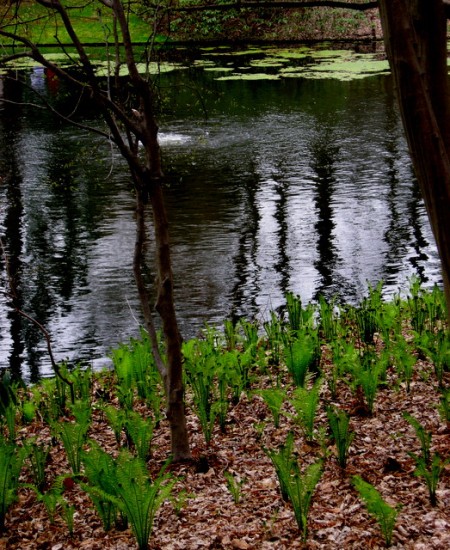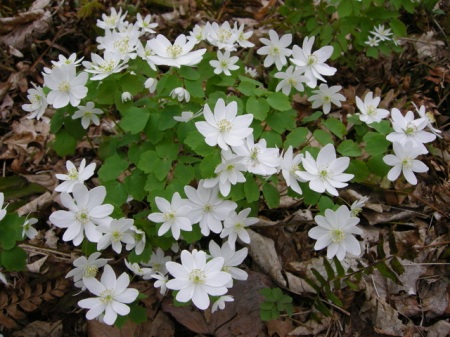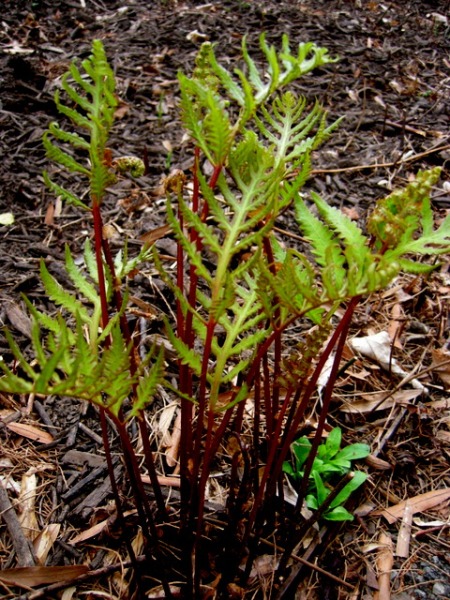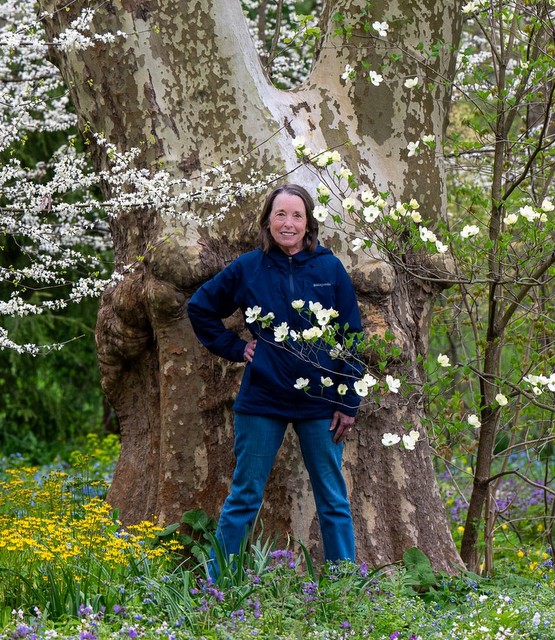
Summer snowflake with Celandine poppy in the woodland at Carolyn’s Shade Gardens.
Our current snowdrop catalogue is on line here.
When snowdrops are finishing, their close relatives, snowflakes (Leucojum), are ready to take over the display. They are quite beautiful, but haven’t been subjected to the intense selection process that has resulted in over 1,500 snowdrop cultivars. They are very easy to grow, and I think they deserve more attention.
Nursery News: Carolyn’s Shade Gardens is a retail nursery located in Bryn Mawr, PA, specializing in showy, colorful, and unusual plants for shade. The only plants that we ship are snowdrops and miniature hostas. For catalogues and announcements of events, please send your full name, location, and cell number (for back up use only) to carolyn@carolynsshadegardens.com. Click here to get to the home page of our website for catalogues and information about our nursery and to subscribe to our blog.
.
 Leucojum aestivum in my woodland in April.
Leucojum aestivum in my woodland in April.
.
There are two main species of snowflakes: Leucojum aestivum or summer snowflake and Leucojum vernum or spring snowflake. Summer snowflake blooms in April in our area so the common name is very confusing. It is a large and vigorous plant reaching 12 to 18 inches with multiple green-tipped, white, lantern-shaped flowers at the end of each flower stem.
It likes moist soil but grows quite well in my dry woodland as you can see from the photos. It grows in dappled woodland conditions but also quite sunny spots and seeds aggressively in my garden. Summer snowflake is native to Central and Eastern Europe. The cultivar ‘Gravetye Giant’ has bigger flowers, but I have not grown it.
.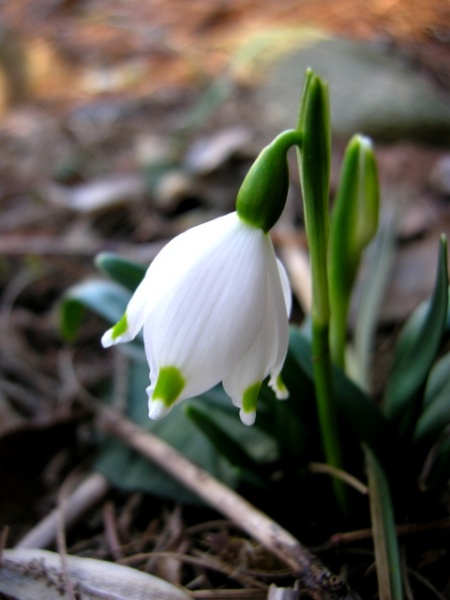
Spring snowflake
Spring snowflake, Leucojum vernum, blooms in March in our area so it could easily be called winter snowflake. On its own, it is a diminutive plant reaching 6 to 9 inches with single, green-tipped, white, lantern-shaped flowers at the end of each flower stem. The leaves are strap-shaped and a very pretty glossy, bright green. It likes moist soil but grows quite well in average moisture conditions in deciduous shade to part shade locations. Spring snowflake is native to Central and Southern Europe.
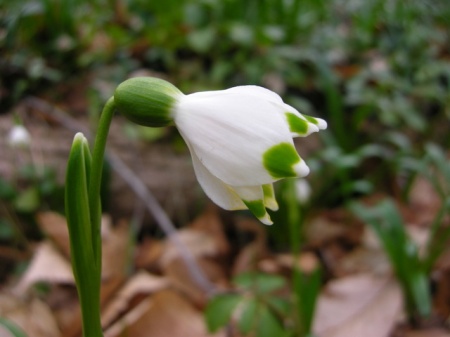

A clump of spring snowflake.
.

.
A hillside of spring snowflake in mid-March at Winterthur.
.
Spring snowflake combined with Amur adonis and glory-of-the-snow in mid-March at Winterthur.
There are some named forms of Leucojum vernum, which are quite interesting:
.

Leucojum vernum var. wagneri (or vagneri) produces two flowers on each stem, although none of mine did that this year. I have read that it is no longer a valid variety. If you visit naturalized populations of Leucojum vernum, a certain percentage will have twin flowers. This photo shows a wagneri with standard-shaped flowers and green spots.
.
This wagneri has the yellower spots typical of var. carpathicum pictured below.
.

Leucojum vernum var. carpathicum has yellow spots on each petal instead of the normal green spots.
.
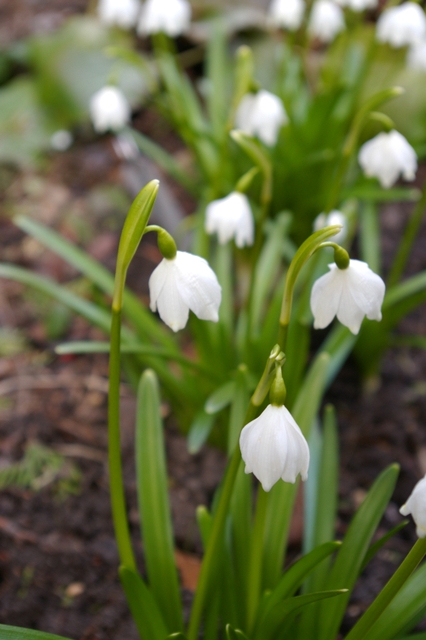
‘Null Punkte’ from Germany is pure white with no spots.
.
‘Gertrude Wister’ is a semi-double spring snowflake with 12 or more petals instead of the normal 6. It was discovered by noted bulb expert Gertrude Wister in her garden on the Swarthmore College campus in Pennsylvania, US.
.
A group of ‘Gertrude Wister’. Carolyn’s Shade Gardens is honored to be the only source for this cultivar.
.
The surface has barely been scratched though—there are many beautiful forms under evaluation:
.

A form with 8 petals found in Charles Cresson’s garden. This is the one I want.
.

This lovely flower appeared in the midst of a group of var. wagneri. It has the spots, but then the very pointy tips are dipped in green paint.
.

A similar paint-dipped flower, but this one is outward facing, even more pointy, and has more color.
.

A very large flower with much more prominent spots.
.

A very large-flowered wagneri.
.

A wagneri with more separated petals.
.

A very large flower with alternating spotted petals and pure white petals.
.

Two flowers fused on the same stem: we will have to see if this repeats itself.
.

A true double flower under evaluation by a friend in Belgium.
.

Very beautiful!
Carolyn
.
Note: Every word that appears in orange on my blog is a link that you can click for more information. If you want to return to my blog’s homepage to access the sidebar information (catalogues, previous articles, etc.) or to subscribe to my blog, just click here.










